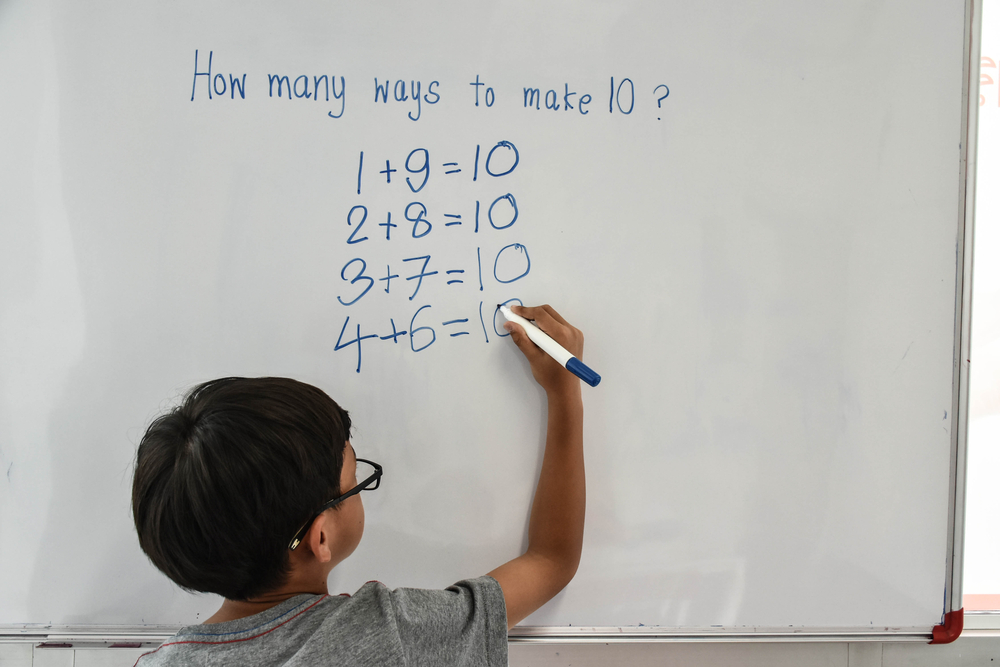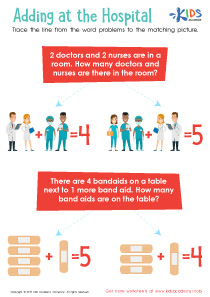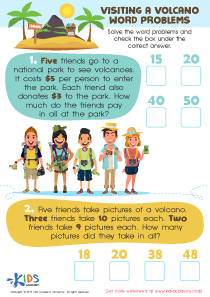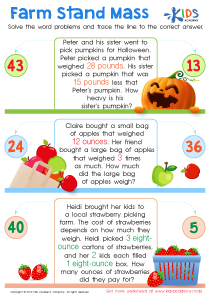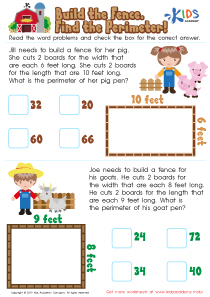Normal Money Word Problems Worksheets for Ages 4-6
1 filtered results
-
From - To
Introduce your little learners to the exciting world of basic financial concepts with our "Normal Money Word Problems" worksheets! Perfectly tailored for children aged 4-6 years, these engaging learning online worksheets are designed to help young minds grasp the fundamentals of money through simple, age-appropriate problems. Each worksheet is filled with colorful illustrations and straightforward questions that make learning about currency fun and accessible. Whether used in the classroom or at home, these worksheets will provide a solid foundation in handling basic money matters, enhancing both math skills and financial awareness. Start your child's financial education journey today!
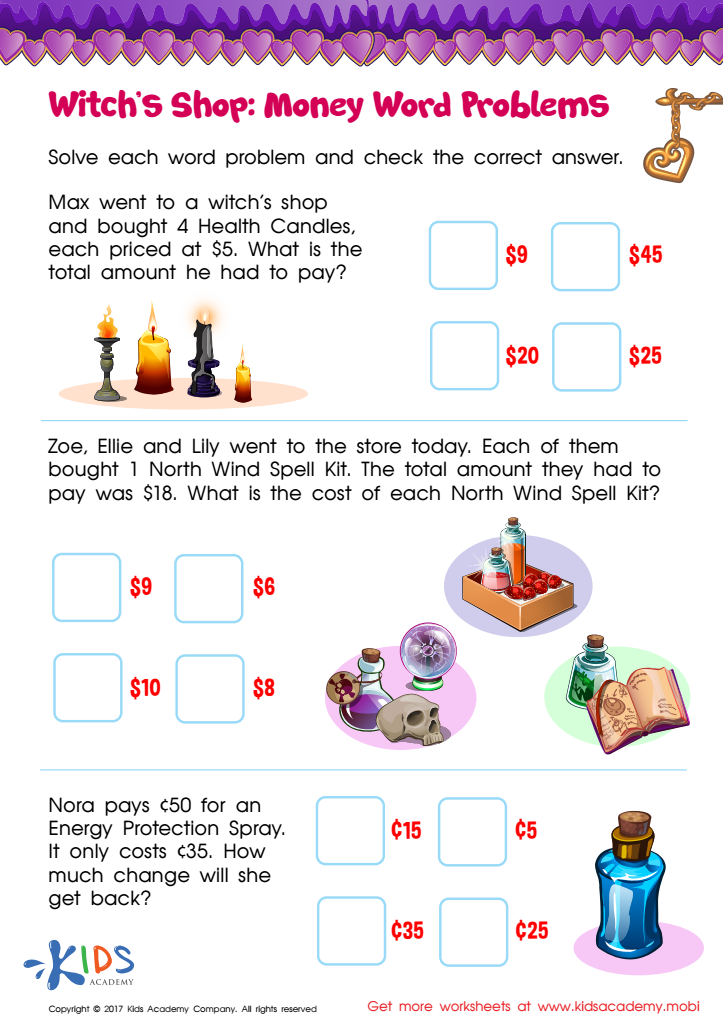

Money Word Problems Printable
Normal worksheets on Money Word Problems are an invaluable educational resource, especially for young children aged 4 to 6 years. These worksheets not only introduce the basic concepts of money and arithmetic but also blend these lessons with critical thinking and problem-solving skills which are crucial at this developmental stage. Integrating learning online printables into this educational process enhances the learning experience, making it both dynamic and accessible.
The primary benefit of these worksheets is their role in developing numerical literacy. Money word problems help children understand and apply basic math operations like addition and subtraction in real-world scenarios. For instance, a typical problem might ask, “If you have three coins worth 5 cents each, how much money do you have in total?” Such questions require children to perform calculations that are directly tied to everyday activities, thereby making the learning process relevant and engaging.
Furthermore, these worksheets are tailored to the cognitive abilities of young learners. They use simple, clear language and visual aids like coins and bills to represent concepts visually. This is particularly important for children in the 4-6 age group as they are often visual learners. By seeing and touching physical representations of money, or viewing vivid illustrations on learning online printables, children can better grasp abstract concepts.
Incorporating learning online printables into the curriculum offers additional advantages. These digital resources are usually colorful and interactive, which can capture the attention of young children more effectively than traditional paper-and-pencil tasks. They are also easily accessible and can be used in various settings – at home, in the classroom, or even on the go. This flexibility allows learning to continue outside the traditional classroom environment, helping children to learn at their own pace and according to their own interests and needs.
Moreover, money word problems worksheets teach more than just math; they also introduce basic financial literacy. Understanding money and its value, how it is used, and the basics of spending and saving are essential life skills. Early exposure to these concepts through worksheets helps lay a solid foundation for more complex financial decisions in later life.
Additionally, by solving money word problems, children also develop their reading and comprehension skills. They learn to parse through a scenario to pick out necessary information, apply a mathematical operation, and derive an answer. This reinforces not only math skills but also enhances their general ability to analyze and interpret text.
Finally, the straightforward format of worksheets makes it easy for parents and teachers to track and assess a child’s progress. The structured nature of these learning online printables ensures that children are guided through gradual learning steps, building confidence as they master each new concept. The immediate feedback available through interactive online worksheets allows for adjustments to be made in real time, ensuring that each child's individual learning needs are met.
The adaptability of learning online printables also means that parents and educators can select worksheets that cater to different levels of difficulty, providing a customized learning experience. For instance, a child who excels in addition might be challenged with more complex problems or introduced to basic concepts of multiplication related to money, such as understanding how many sets of a coin are needed to reach a certain amount.
Moreover, utilizing online resources can encourage a collaborative learning environment. Children can work together on money word problems, discussing their thought processes and reasoning with peers or family members. This not only enhances their social skills but also deepens their understanding and retention of the material as they explain and listen to different perspectives on solving the same problem.
Additionally, these worksheets provide an excellent opportunity for integrating technology into early education, which can be extremely beneficial given the growing importance of digital literacy in today’s world. Children learn to navigate digital platforms and tools while doing their worksheets, skills which are indispensable in both academic and everyday contexts as they grow.
In conclusion, normal worksheets on Money Word Problems are essential tools for teaching young children aged 4 to 6 years. They foster not only math and financial literacy but also reading comprehension, critical thinking, and digital navigation skills. The incorporation of learning online printables makes these lessons even more effective by adding elements of interactivity, accessibility, and customization, thereby enriching the overall educational journey of young learners. As children engage with these worksheets, they gain not just academic knowledge but also practical skills that will serve them well throughout their lives.
 Assign to My Students
Assign to My Students






